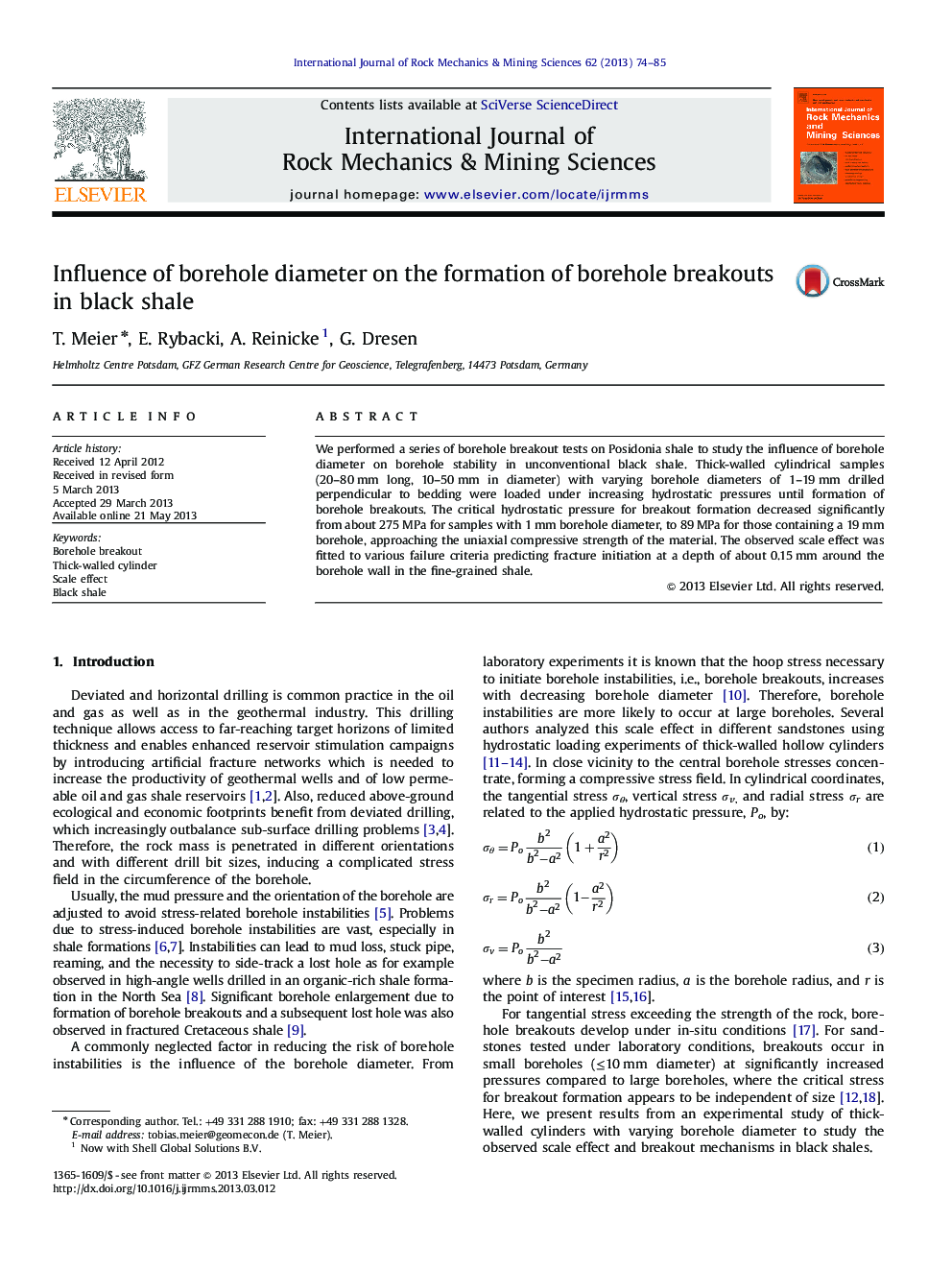| Article ID | Journal | Published Year | Pages | File Type |
|---|---|---|---|---|
| 809208 | International Journal of Rock Mechanics and Mining Sciences | 2013 | 12 Pages |
•We studied borehole breakouts under hydrostatic load in black shale.•With decreasing borehole diameters the breakout pressure decreased.•Observed breakout patterns can be described by Mohr–Coulomb law.•Four failure criteria were used to model scale effect.•The criteria indicate the influence of vertical stress on breakout initiation.
We performed a series of borehole breakout tests on Posidonia shale to study the influence of borehole diameter on borehole stability in unconventional black shale. Thick-walled cylindrical samples (20–80 mm long, 10–50 mm in diameter) with varying borehole diameters of 1–19 mm drilled perpendicular to bedding were loaded under increasing hydrostatic pressures until formation of borehole breakouts. The critical hydrostatic pressure for breakout formation decreased significantly from about 275 MPa for samples with 1 mm borehole diameter, to 89 MPa for those containing a 19 mm borehole, approaching the uniaxial compressive strength of the material. The observed scale effect was fitted to various failure criteria predicting fracture initiation at a depth of about 0.15 mm around the borehole wall in the fine-grained shale.
